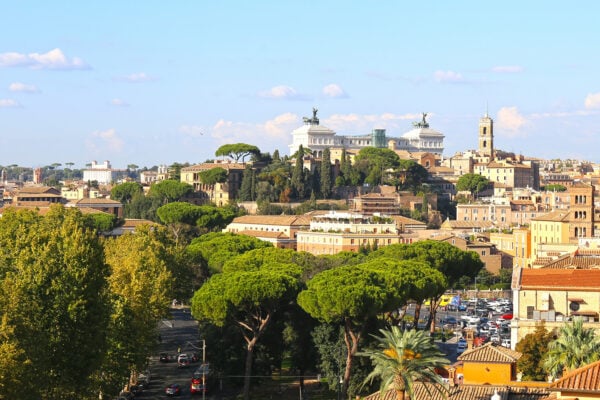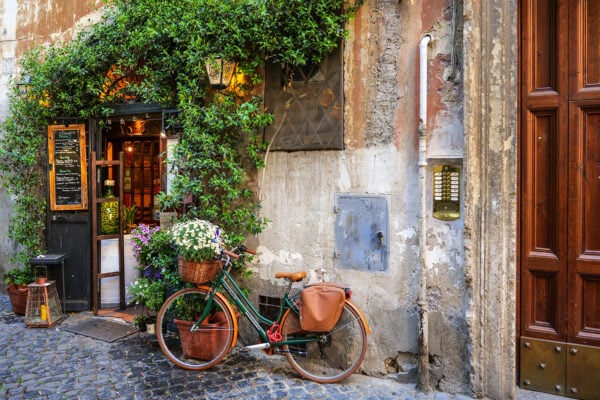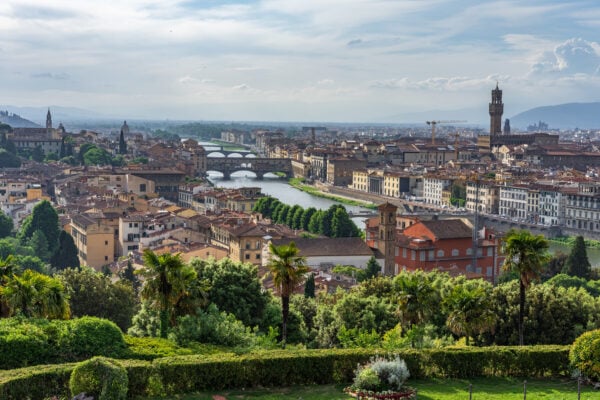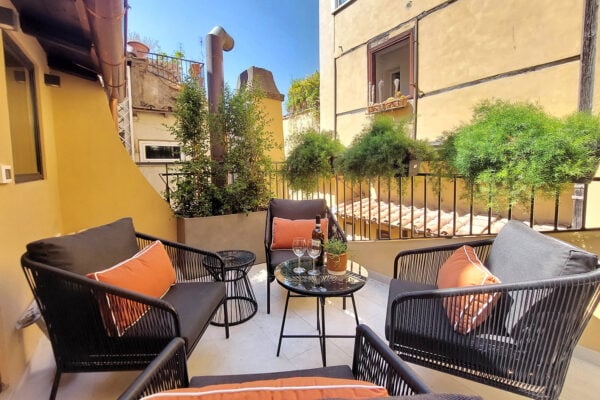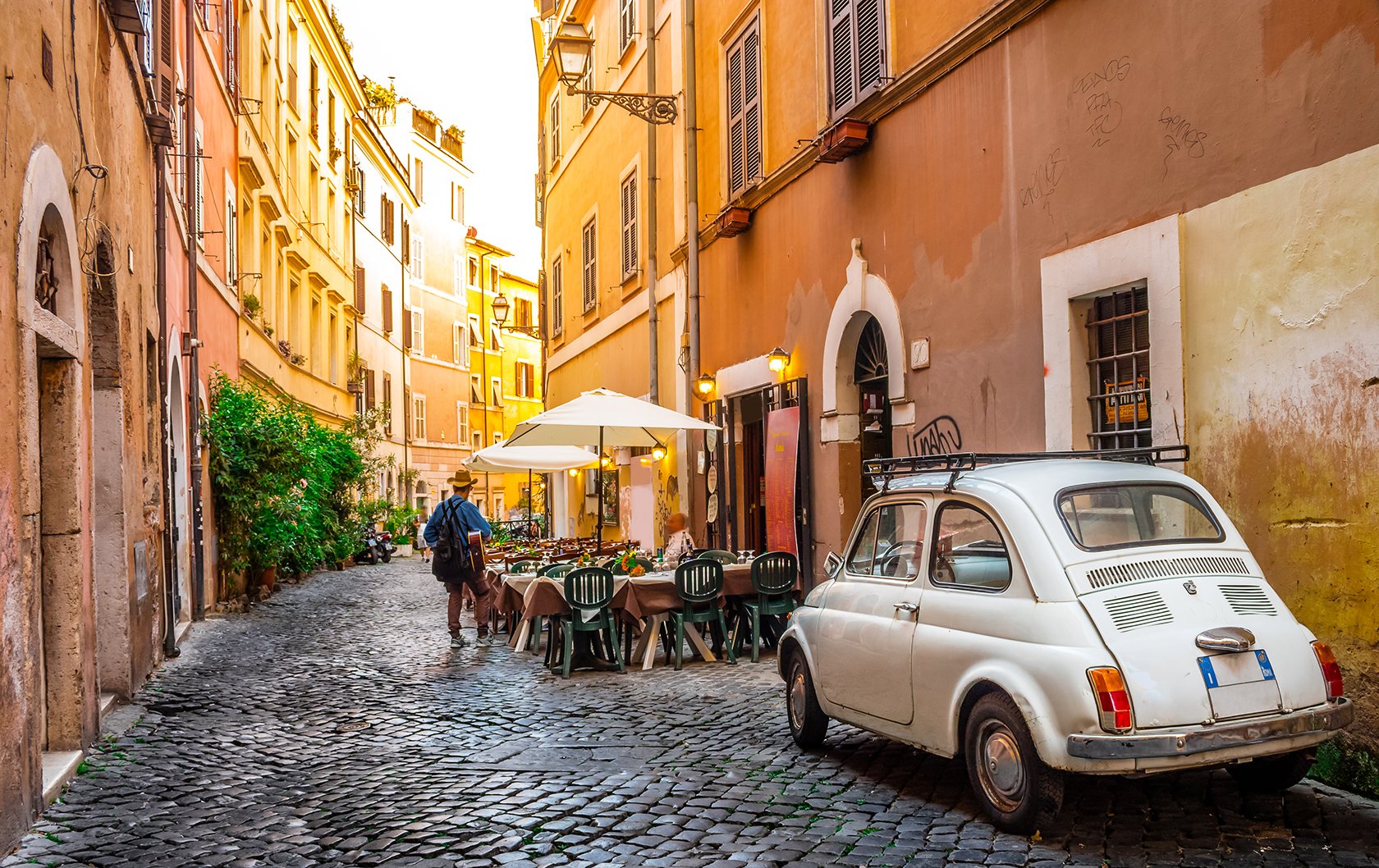
Strolling through the picturesque streets of Trastevere.
There are so many ways to visit a city, but perhaps the best way to truly feel as though you know it is to get lost walking within it. Rome has the particular advantage of being so enormous and so filled with history that one could explore it for days on end and barely scratch the surface. That, of course, is what keeps us all coming back.
Although it’s now one of the trendiest quarters of the city, ancient Trastevere is still an evocative leap back into time and the perfect place to wander through centuries of the Eternal City. The neighborhood on the other side of the Tiber is filled with tons of history and dotted with museums, shops and, of course, plenty of places to eat, drink or just stop and watch the world go by. All you need is a comfortable pair of shoes suited to cobblestones and your sense of adventure!
If you’re staying in Central Rome, getting to Trastevere is a lovely walk in itself that might take you across the cobblestones of Monti or through the lively squares of Campo de’ Fiori until you reach the Lungotevere. If you prefer to reserve your energy for Trastevere itself, there are trams that can take you to Torre Argentina. From there, after you admire the ruins in the square that have now been transformed into one of the world’s most famous cat sanctuaries, you’re ready to step back in time and be utterly enchanted.
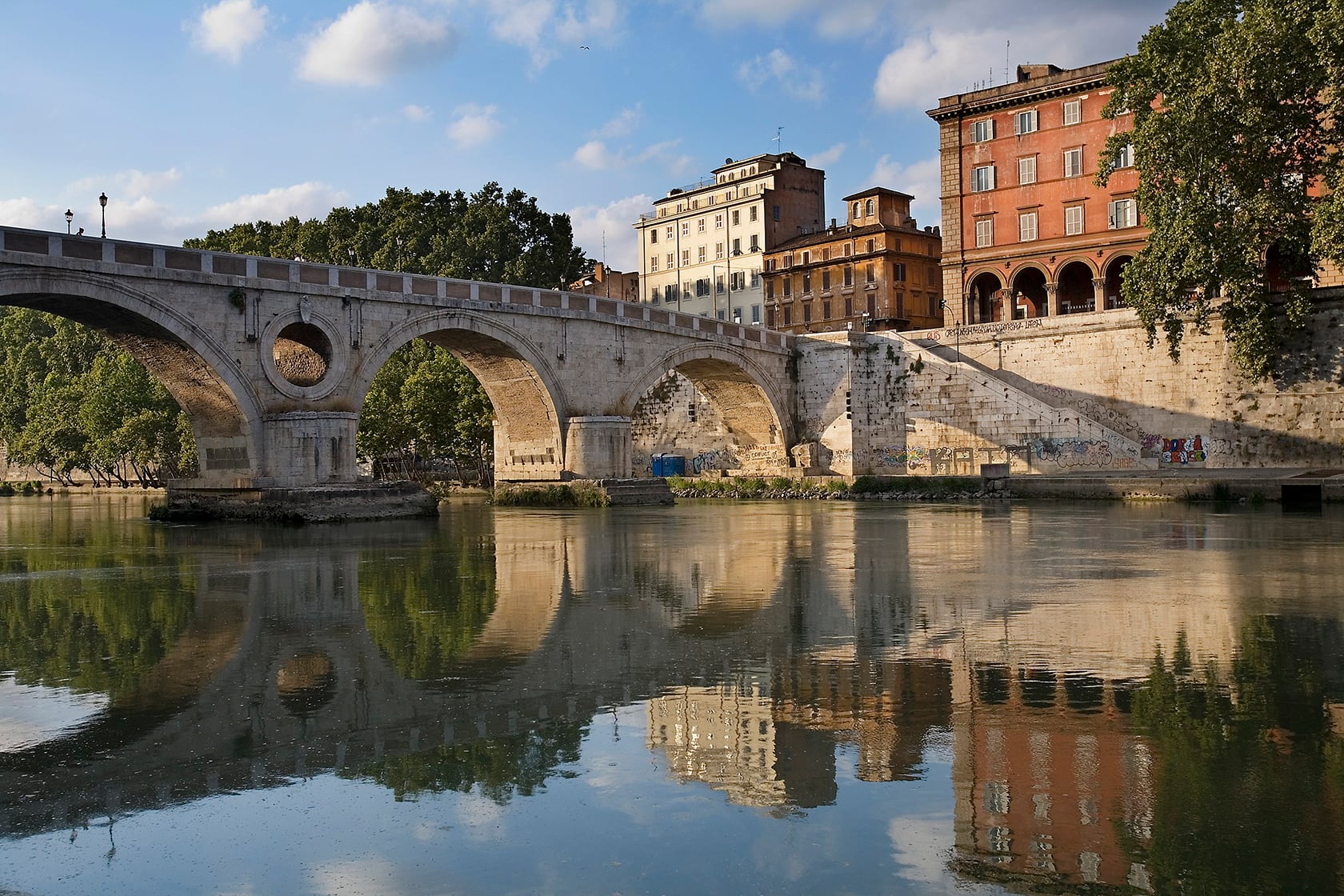
Cross the historic Ponte Sisto bridge. (Credit)
Ponte Sisto & Fontana di Ponte Sisto
From Campo de’ Fiori you’ll cross over Ponte Sisto, a pedestrian only bridge that was built to connect Rome to Vatican City in 1473 AD. The bridges of Rome are worthy of their own walking tour alone, but from Ponte Sisto you’ll get a lovely view down the Tevere and also take in the Isola Tiberina. The bridge connects central Rome and Trastevere through Piazza Trilussa and via Giulia. As you get to the other side of it you’ll find yourself instantly transported to a different mood, with lots of trendy shops, smaller alleyways and people lounging. Though Trastevere can get quite crowded it never quite feels as busy as the other side of the river, and you’ll appreciate it as you wander. Piazza Trilussa is almost always teeming with life and is perhaps one of the most well known meeting points in the neighborhood.
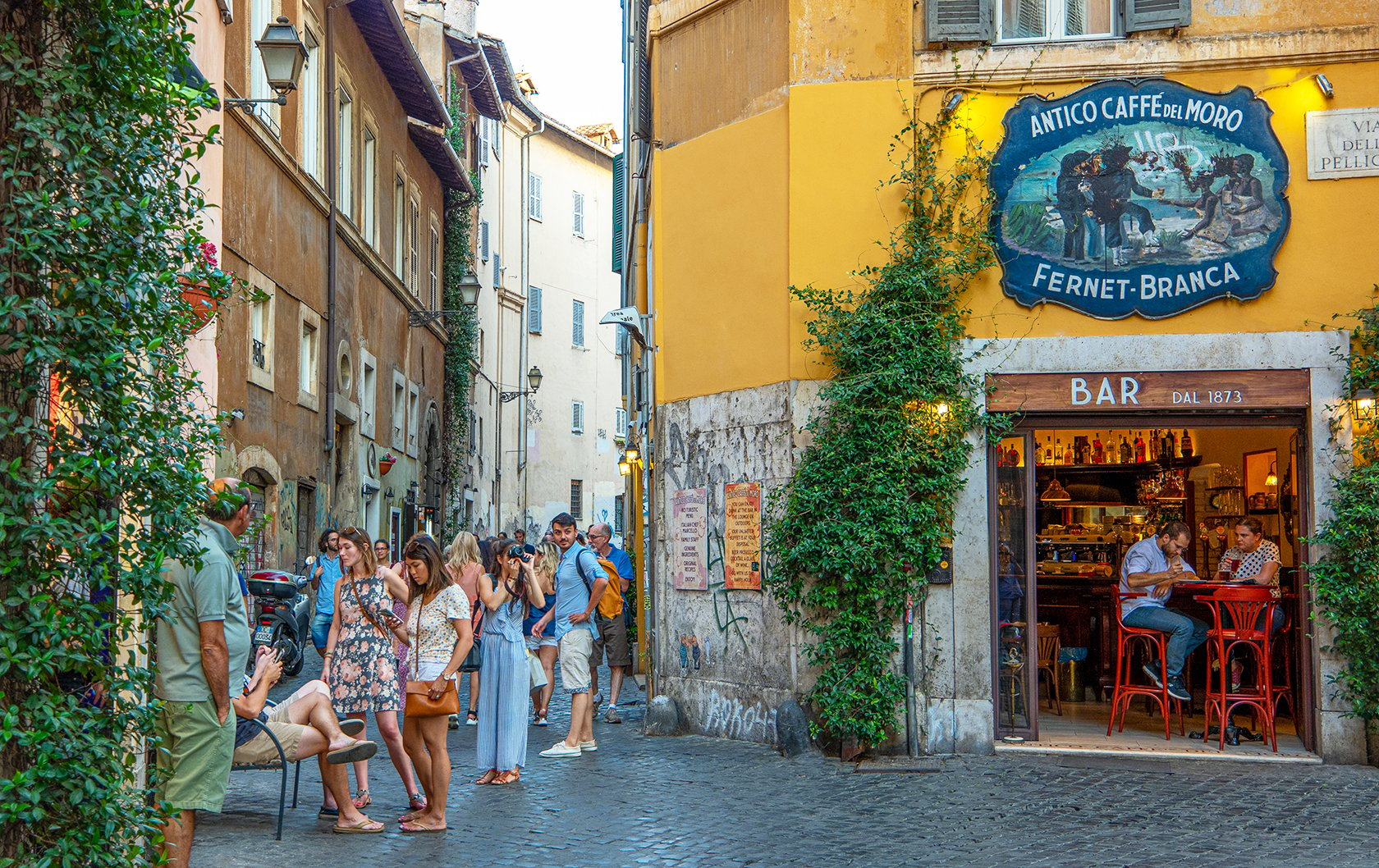
The classic Antico Caffè del Moro in Trastevere.
Via del Moro & Antico Caffè del Moro
As you pass through Vicolo del Cinque, where the palazzo for which the street is named imposingly stands and still houses the Cinque family, you’ll come upon one of the most important streets in Trastevere. Via del Moro is a perfect snapshot of the layers that make Trastevere so special, and it is lined with buildings that date from the medieval period to the 17th century through to the Renaissance. But that isn’t what makes Via del Moro so special: the Antico Caffè del Moro is one of the oldest cafes in Italy and the oldest in Rome. While it may be a century younger than Venice’s famed Caffè Florian, it is undeniably authentic and definitely worth a stop. Besides, what walk is complete without a coffee to start your engine?
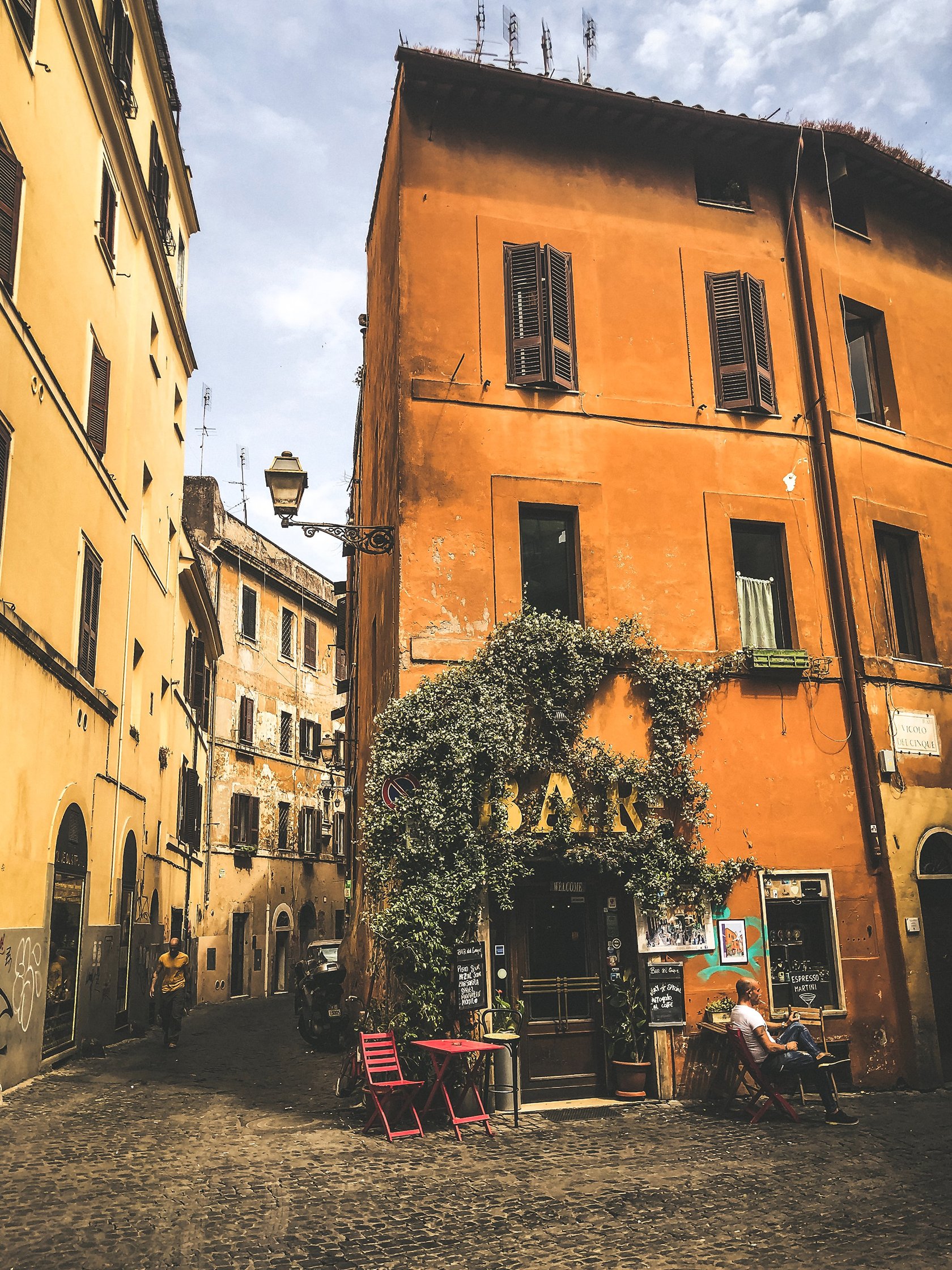
The colors of Trastevere along Vicolo del Cinque. (Credit)
Piazza & Basilica di Santa Maria in Trastevere
Just when you may start to wonder if you’ve made the wrong turn down Via della Pelliccia, the world will open back up and you’ll find yourself in the middle of one of the most charming squares the city hides in its folds: Piazza di Santa Maria in Trastevere. Buildings line the square and its prominent central fountain is a focal point for visitors and locals like. Of course, it is dominated on its western side by the Basilica di Santa Maria in Trastevere, the church for which the piazza is named. Although much of the construction dates to the period 1140-43, the first sanctuary was built in 221 and 227, with the basic floorplan remaining unchanged since the year 340. Standing inside of both the Basilica and the square is a reminder that you are truly walking through history.
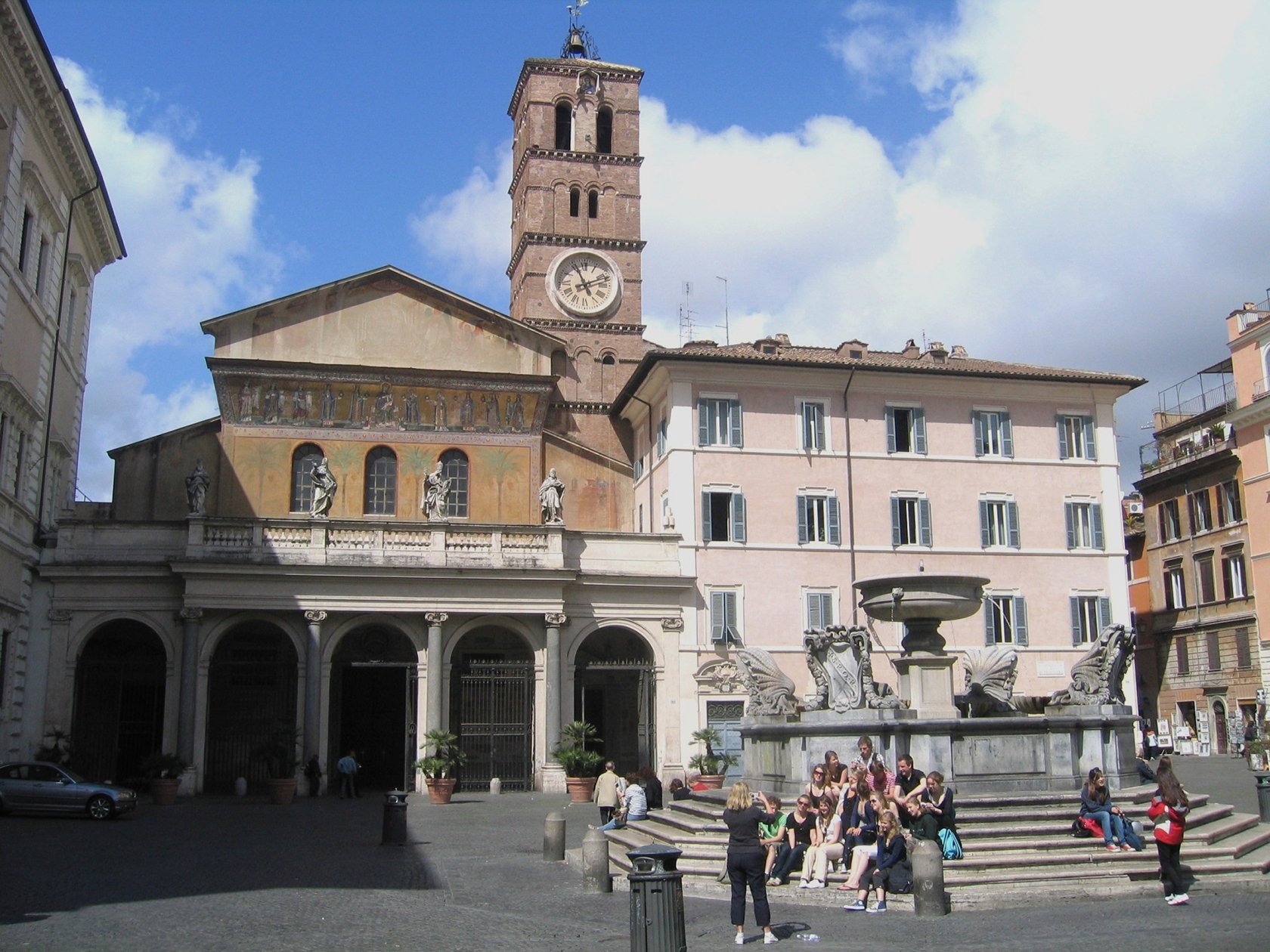
Visit the Piazza Santa Maria in Trastevere. (Credit)
Chiesa Sant’Agata & Via della Lungaretta
Any good walking tour should feel a bit like you’re walking in circles, but you’re actually taking in the beauty of Trastevere exactly as nature and history intended. By walking in circles. However Via della Lungaretta is one of those streets that you could pass through a thousand times and never tire of, whether because of the smells wafting from ancient windows or the voices calling out in a chorus of chaotic salutations. As you move from Piazza di Santa Maria along this street you’ll be making your way to Viale Trastevere, the wide boulevard that bisects the quarter. As you walk along Via della Lungaretta, think of the thousands of years of history you’re walking over since this road follows the exact route as an ancient Roman road.
Before you hit the leafy and decidedly more crowded promenade of Viale Trastevere you’ll want to have a quick look at the Church of Sant’Agata. It houses the statue of the Carmelite Virgin that gets carried in the Festa de Noantri, one of the last religious festivals in Rome, which dates back to the start of the 16th century.
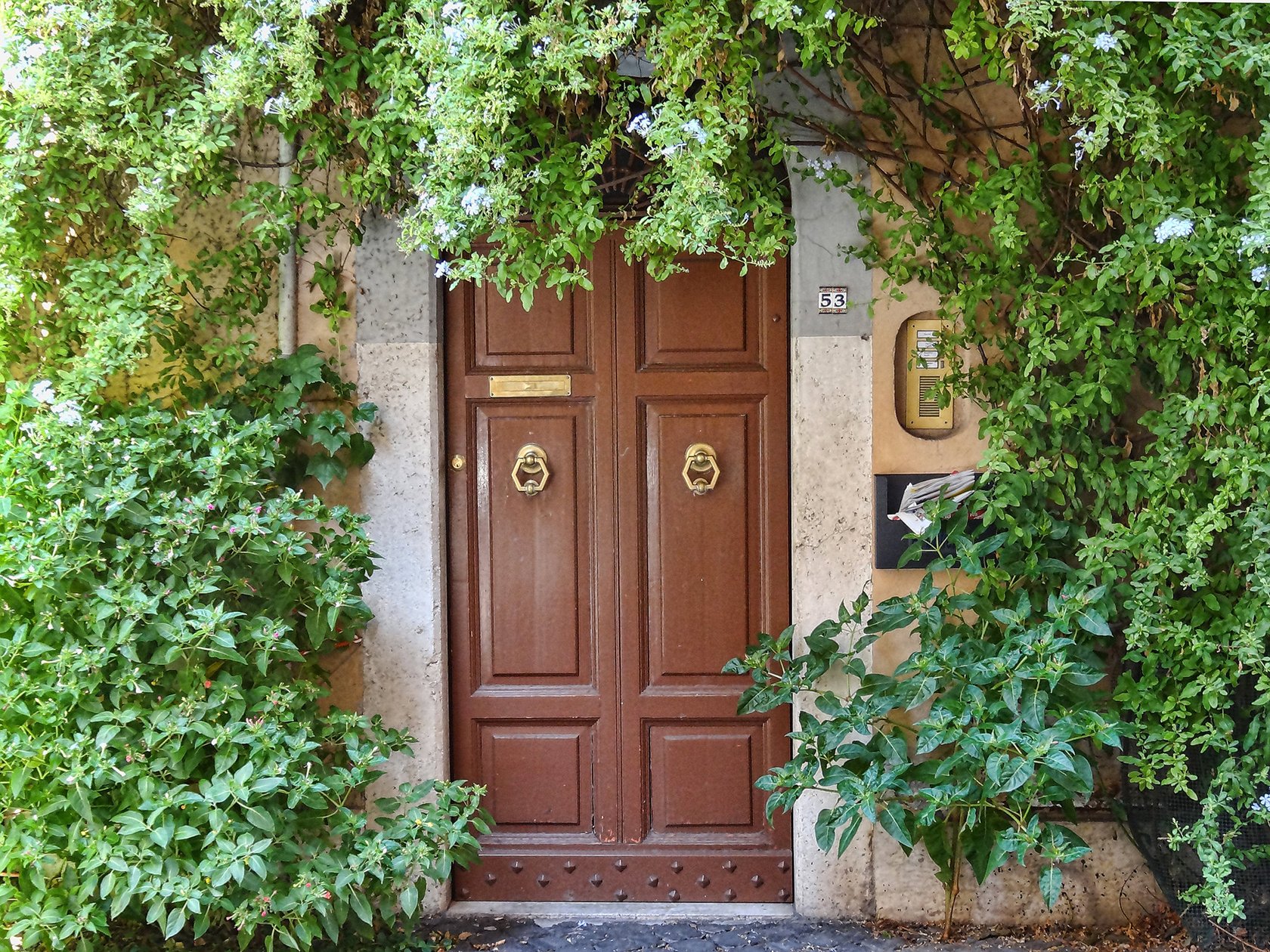
A pretty street scene along Via della Luce. (Credit)
Via della Luce & Via di San Gallicano
After crossing the Viale Trastevere and continuing on down Lungaretta you’ll come to Via della Luce or “street of light,” so named for the small church of Santa Maria della Luce. However, what makes this little street really special is that it was the subject of a 19th century watercolor by Ettore Roesler Franz, which depicts a little slice of life along the road. Follow the street as it runs parallel to the larger Viale and see if you can imagine what life smelled, sounded and looked like when painters used to set up their easels.
As you cross back over the Viale you’ll find Via di San Gallicano, a wider, more modern street that owes its importance in the area to the San Gallicano hospital, located on the corner. At the time it was built in the 18th century, it was considered one of the most advanced hospitals in the world and was instrumental in making Trastevere a more integral part of Rome.
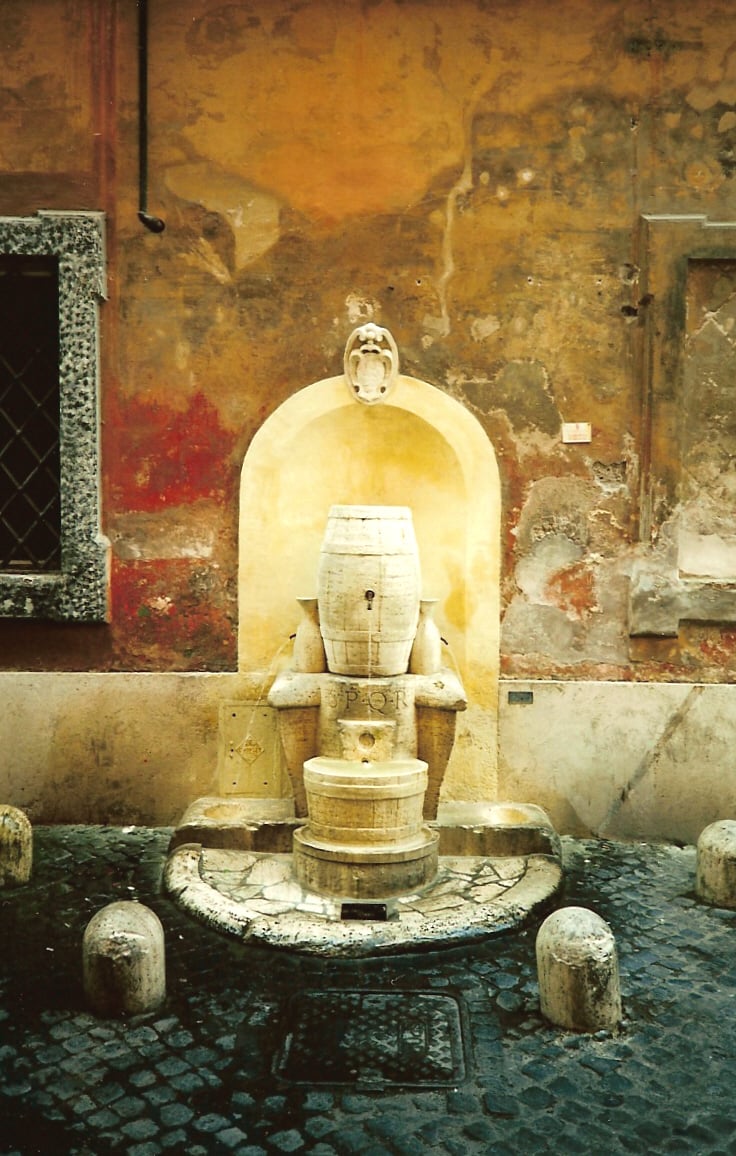
The unique Fonta della Botte. (Credit)
Fontana della Botte
We all know about the Roman love for a fountain, whether it’s a drinking fountain for you or your pets or an ornate fountain that you are most definitely not supposed to swim in (really, don’t swim in the Trevi Fountain). Some of the fountains around the city are quite eclectic, and Trastevere has a few very noteworthy ones that make for a lovely sight on your walking tour. The Fontana della Botte, or Barrel Fountain, is a 1927 work by sculptor and architect Pietro Lombardi who was commissioned to build public drinking fountains by the Municipality of Rome. His works can be found all over the city but this one, on Via della Cisterna, pays homage to the local winemaking traditions. It shows the typical barrel, the wine vat, and containers beside the barrel that Romans call “quartini.”
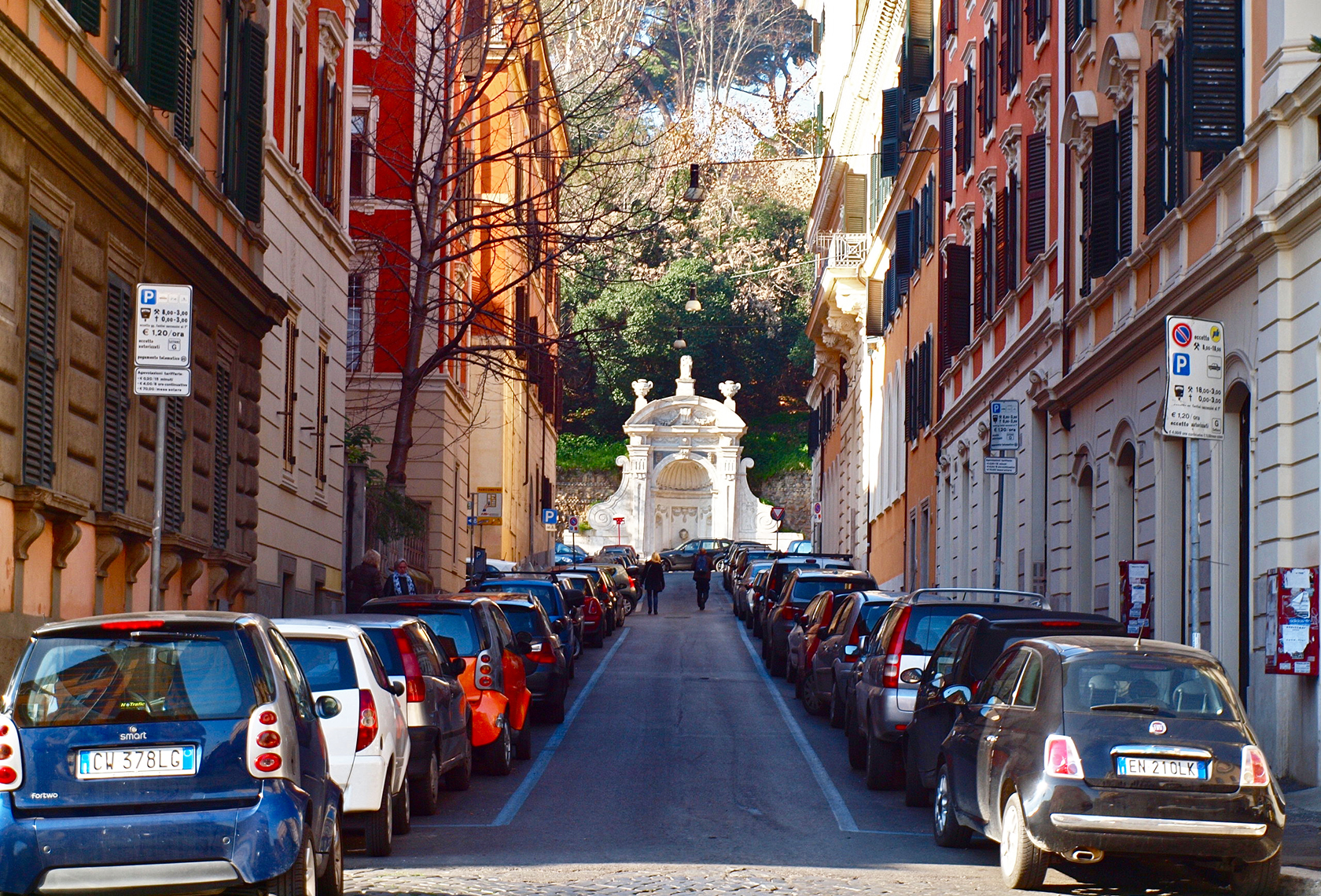
A view to the Fontana del Prigione. (Credit)
Fontana del Prigione
As you start to make your way towards the Gianicolo, or Janiculum Hill, all this hydration will surely come in handy. Heading down Via Luciano Manara you’ll find yourself at the Fontana del Prigione which, like so many other fountains in Rome, has its own unique story. In this case the fountain, which has a name that comes from a group of statues depicting Apollo, Venus and a prisoner, was originally part of Villa Montalto, the private residence of Pope Sixtus V. The villa has long since disappeared but the fountain made its way across the river and now marks the beginning of the ascent up the hill.
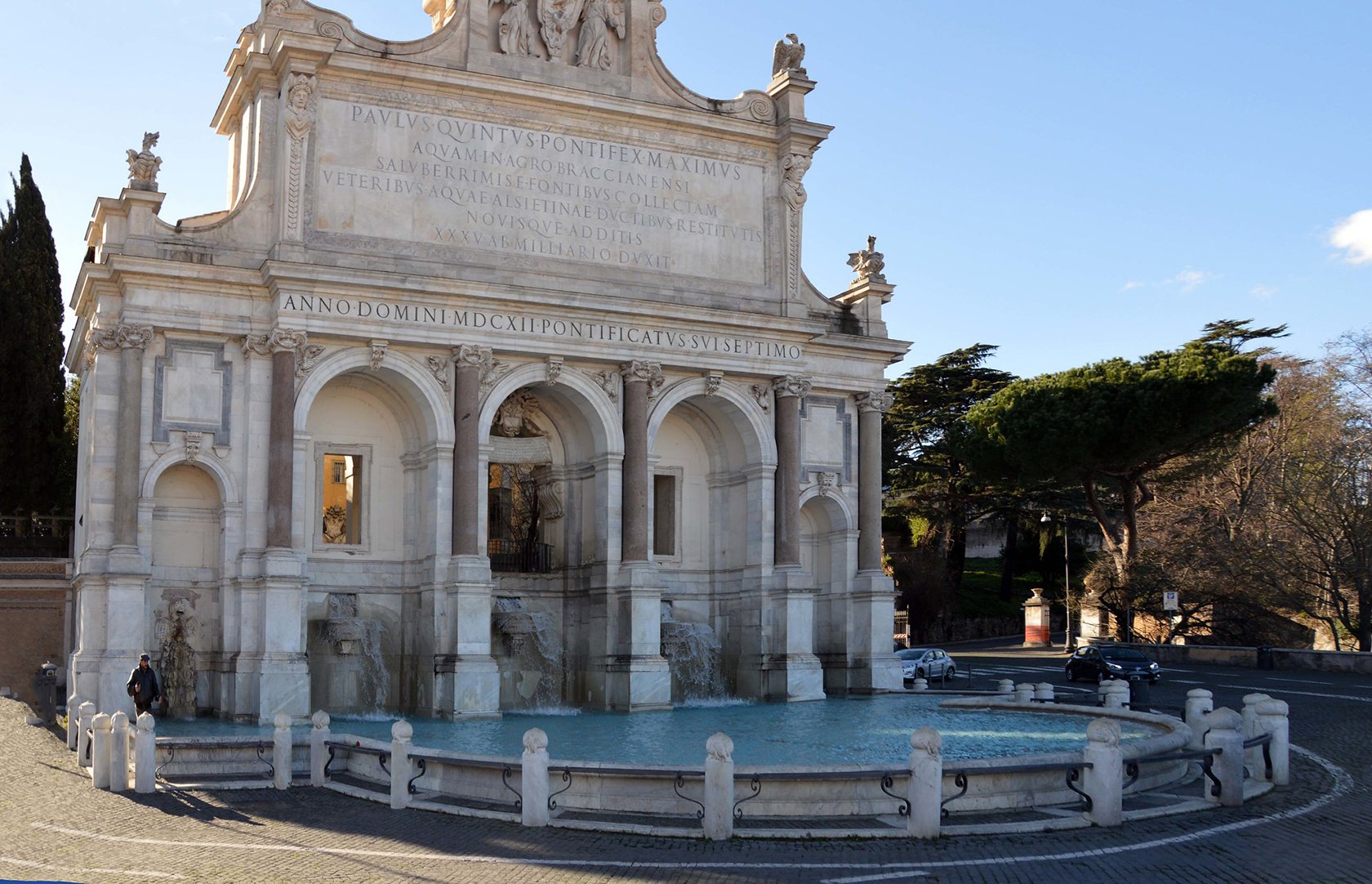
The stunning Fontanone. (Credit)
Fontana dell’Acqua Paola
We just couldn’t resist including one more fountain on the tour, but in our defense it is one of the most impressive that you’ll find anywhere in Rome. The Fontana dell’Acqua Paola is known by Romans as the “fontanone” because of its imposing size, and its position on the slope of the Gianicolo makes it appear even more impressive. The first fountain to be built on the right bank of the Tiber, the Fontana dell’Acqua Paola was commissioned by Pope Paul V Borghese (1605-1621) to mark the endpoint of the Trajan Aqueduct, a project he also spearheaded. The fontanone has an incredible history worthy of an entire history book all on its own: for instance, from 1901 to the 1930s the water from the fontanone fed the first hydroelectric power station in Rome.
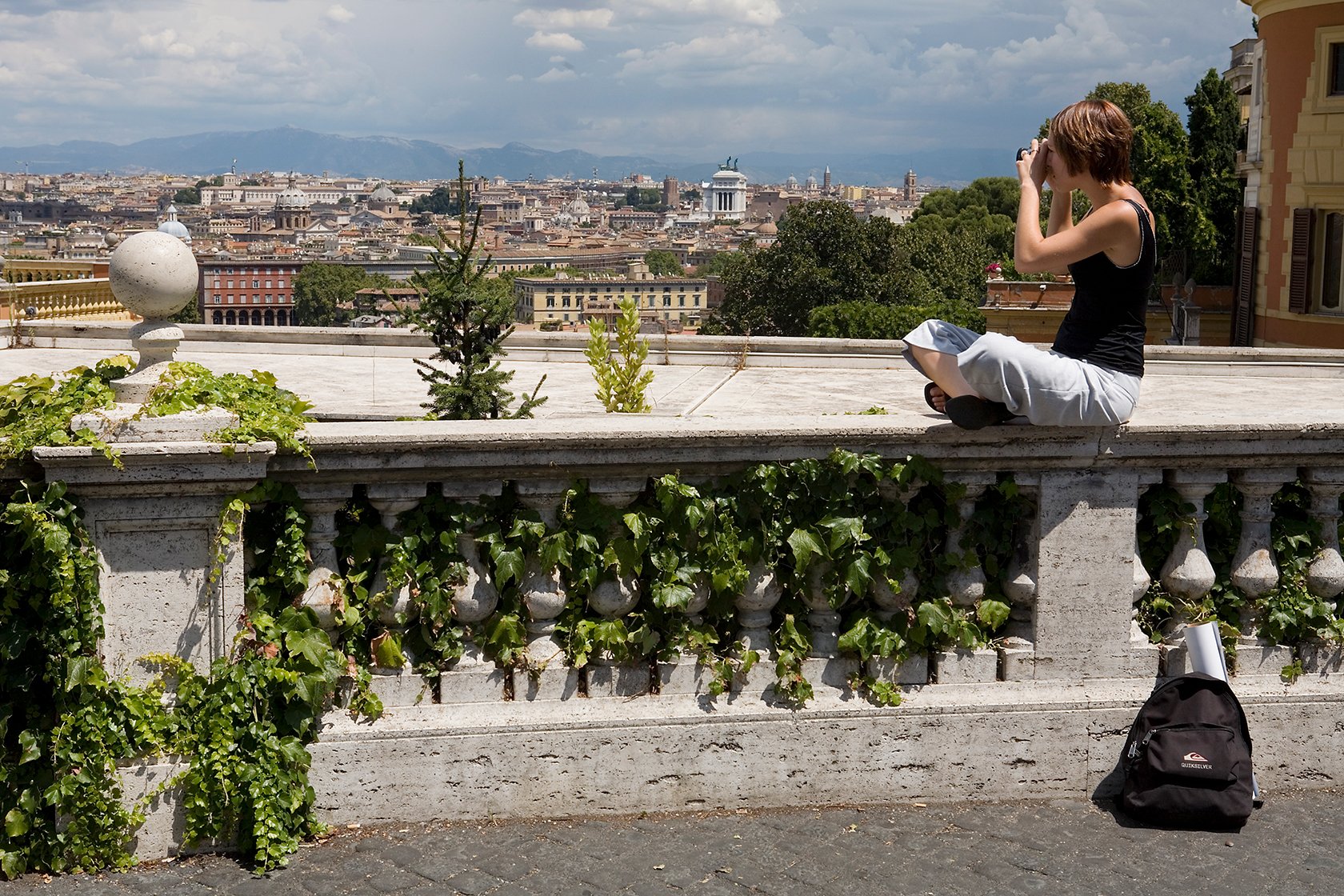
View overlooking Rome from the Gianicolo hill. (Credit)
Belvedere del Gianicolo & Monumento a Giuseppe Garibaldi
Even though not technically one of the Seven Hills of Rome, the Gianicolo is definitely one of its most impressive. Because it is technically outside of the ancient city walls it may not occupy that distinction but it is nonetheless one of the absolute best vantage points for looking out over the Eternal City. The best time may be closer to late afternoon or early evening to catch the golden glow on the rooftops, but if you’re there at noon, there is a daily ritual of a single cannon shot being fired that dates back to the 19th century. Don’t leave without having a look at the Garibaldi monument that depicts the heroes of the Risorgimento, including a towering statue of Garibaldi himself on horseback.
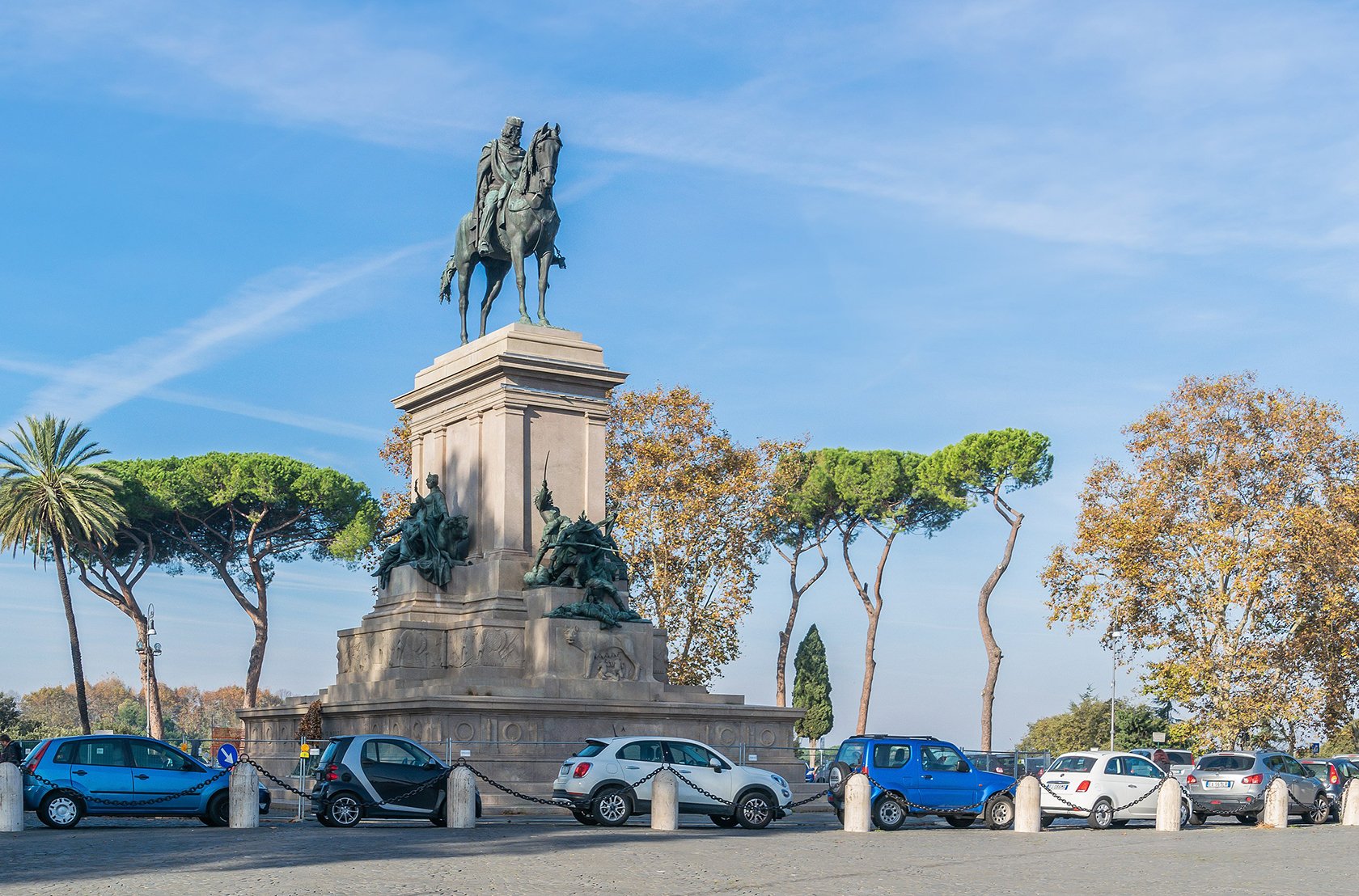
Monument to Giuseppe Garibaldi. (Credit)
Wherever you start and wherever you finish, a walking tour through Trastevere is a guaranteed feast for the senses. And if you’re hungry, thirsty, or looking for some retail therapy to forget your tired feet, check out our Guide to Rome’s Trastevere Neighborhood for more inspiration!
